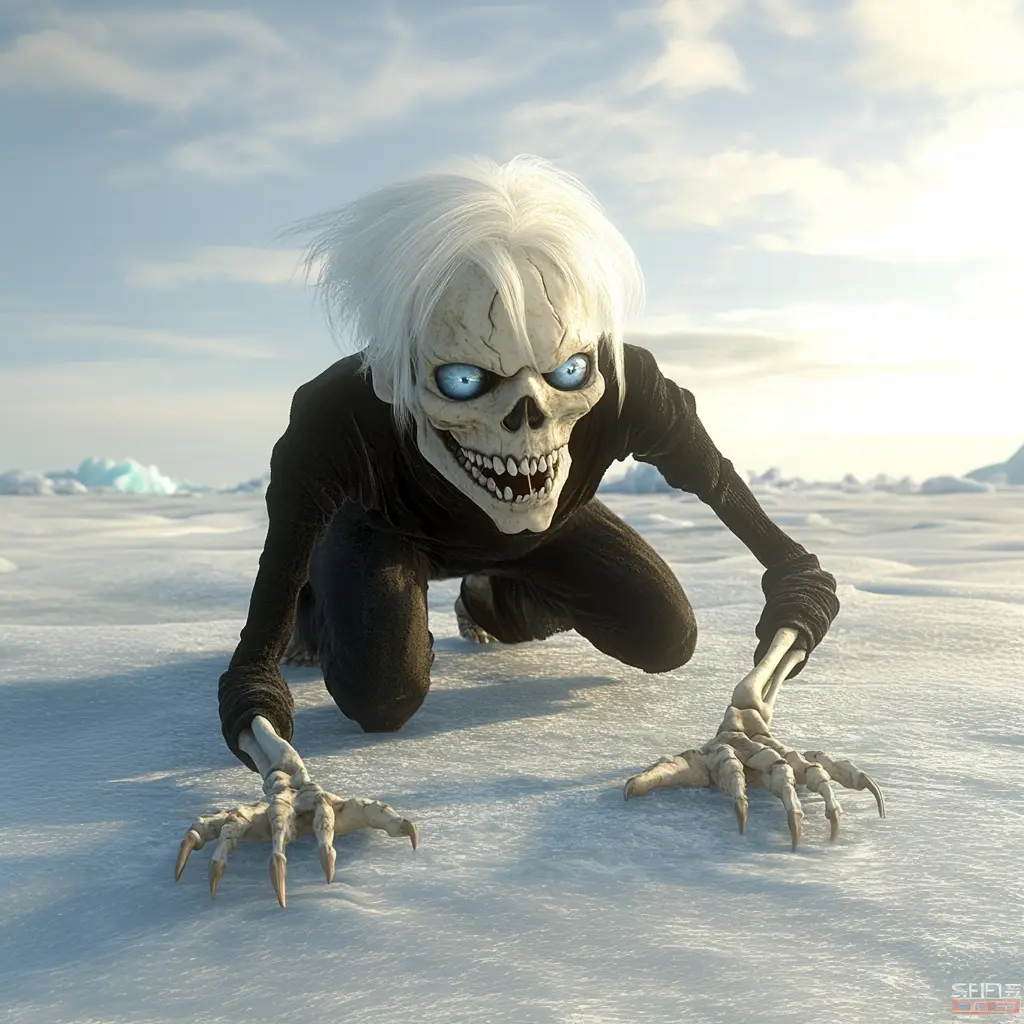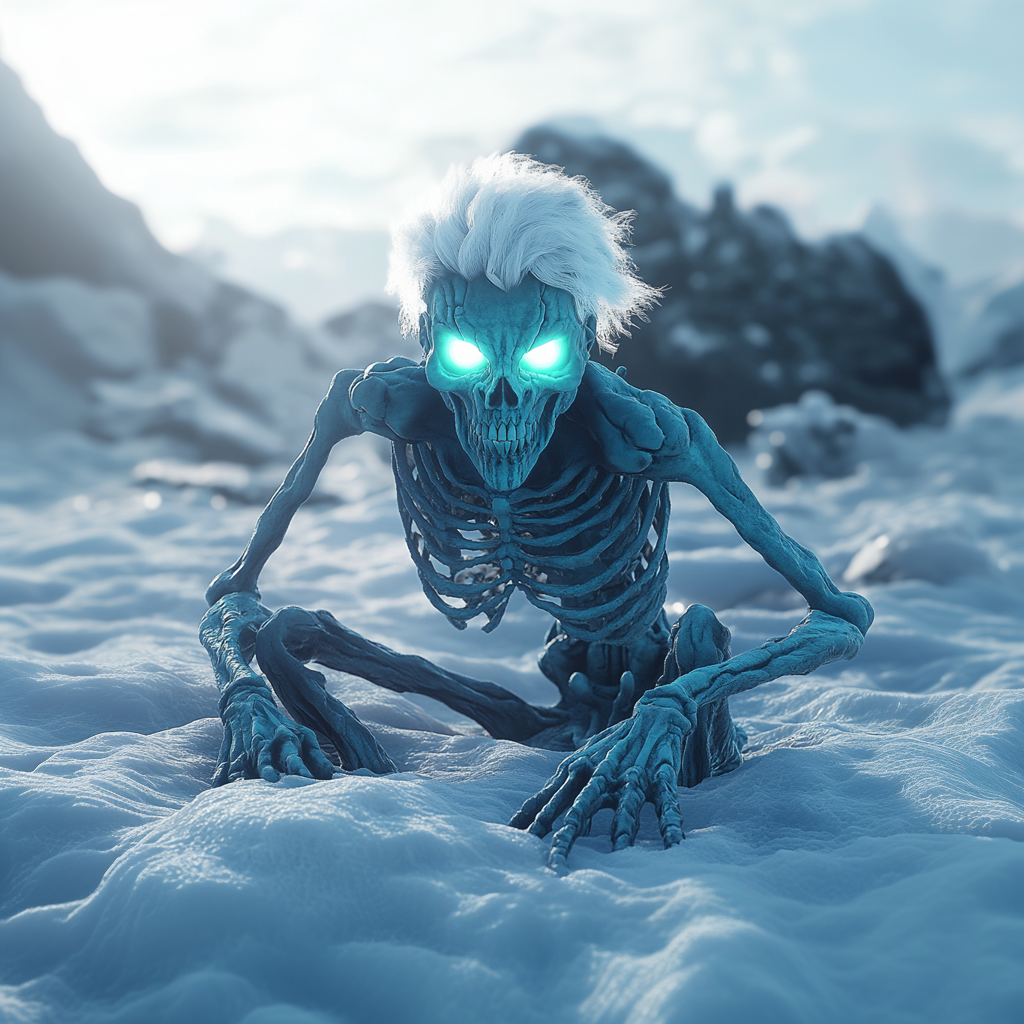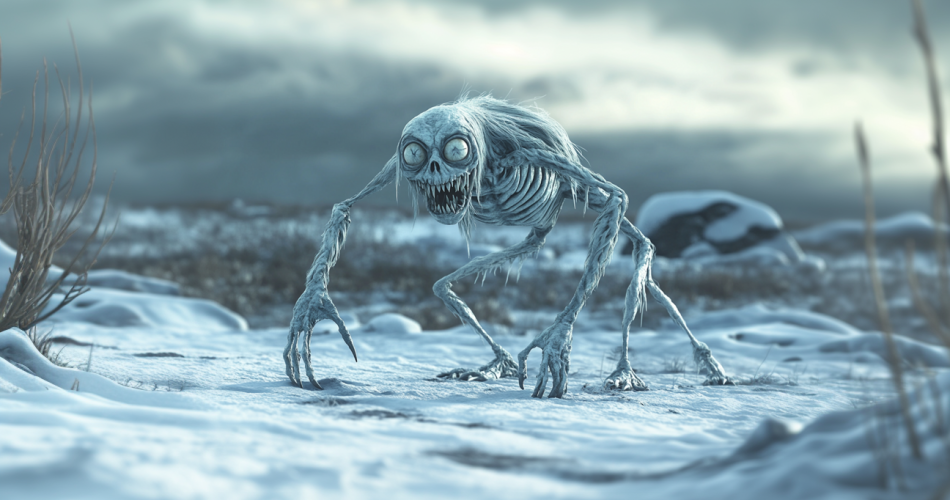Imagine you are an ancient Inuit kid walking from the fishing boats to your camp after a hard day’s work. The sun is low in the sky, and you are eager to return to your dad’s Iglo and feast on the salted meat your mum must have prepared for you.
Suddenly, you hear an eerie low laugh behind you. You stop and look around, but you are alone—or so you think. As you continue to walk, you hear the laugh again; this time, it’s louder and closer.
You look behind you and spot a thin humanoid creature staring at you with a big grin on its face. Your house is close, so you bolt, closely pursued by the creature. You manage to escape into your house in time, but you can still feel the creature’s cold aura as it walks away.
You have just met the Mahaha. A mythical creature that has terrorised the Arctic Ice plains for centuries.
What is the Mahaha

The Mahaha is a malevolent monster that has terrorised Arctic civilisations for centuries. According to Inuit Mythology, this creature is an evil spirit that prowls the outskirts of human communities and attacks anyone careless enough to wander away from the group.
Unlike other Inuit mythical creatures that tear their victims apart or cause them to disappear, the Mahaha employs a unique technique that will literally make you die of laughter. It tickles its victims to death.
Origin of the Mahaha
The Mahaha has no known origin or relationship with other mythical creatures in Inuit mythology. He is a lone creature who lives and operates alone. However, due to his love for water, he is sometimes linked with Sedna, the Inuit goddess of the sea.
The solitary behaviour of the Mahaha is a common theme for mythical creatures in Inuit Mythology. Another example is the Qalupalik, a water-dwelling child snatcher in the Inuit myths.
What does the Mahaha look like?
The Mahaha is described as a frail-looking and thin creature. Despite this appearance, it is believed to possess enough strength to easily overpower his victims and tickle them.
The creature does not wear clothes; he walks the cold Arctic with his bare feet. However, despite its sparse clothing, the Mahaha is not affected by the cold at all. In fact, his ever-present grin shows he enjoys the cold.
The eyes of the Mahaha are described as pale blue, grey or white, depending on who you ask. There are no Irises, and the creature’s eye is said to shine so bright that it can be seen through the long hair that drops over its face.
The creature also has a long and sharp set of fingernails, which he uses to tickle his victims to death. It is often said that the best way to identify the Mahaha is the presence of a permanent, creepy grin that stretches on his lips.
Powers and Abilities

As mentioned earlier, the Mahaha is not affected by the freezing temperature of the Arctic; in fact, it is believed that he enjoys this cold very much.
According to some Inuit Legends, the Mahaha has a very cold touch that will freeze and immobilize anyone it touches. While stalking his victims, the creature uses this touch to freeze them in place and then tickles them to death.
Weakness of the Mahaha
Despite its vicious and scary aura, the Mahaha is not the smartest creature in the classroom of mythological creatures.
According to the stories, people cornered by the Mahaha can still escape by inviting the creature to drink from any nearby flowing water body.
The Mahaha loves to drink water, and most times, it will oblige this request. As the creature bends over to drink, it can be easily pushed into the water. Due to its lightweight, it is easily swept away by the flowing water current.
Possible Explanation for the Mahaha Myth.
Like most of the other creatures in Inuit mythology, the legend of the Mahaha was probably created as a cautionary tale to remind people of the dangers of wandering away from the group in the cold, unpredictable Arctic environment.
Also, history and science have shown that people that die from hypothermia (Freezing to death) may appear to have a cold smile on their face due to the contraction of the facial muscle by the extreme cold.
The Inuit might have found bodies like these in the snow and concocted a story to explain this phenomenon.
Conclusion
The Mahaha is not just a figure of fear but he is also an essential part of the Inuit storytelling and cultural practices. Stories about the Mahaha is often used to caution children about the importance of vigilance and the dangers of the Arctic environment.
In contemporary times, the Mahaha continues to be significant within Inuit communities. Even with the harsh realities of Arctic life, its symbolism remains a powerful reminder of the past.
